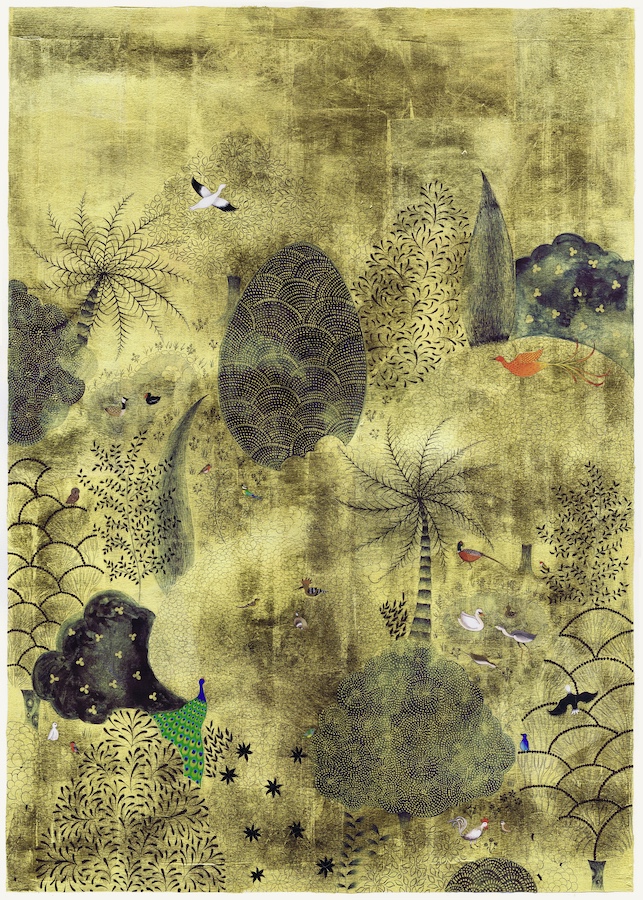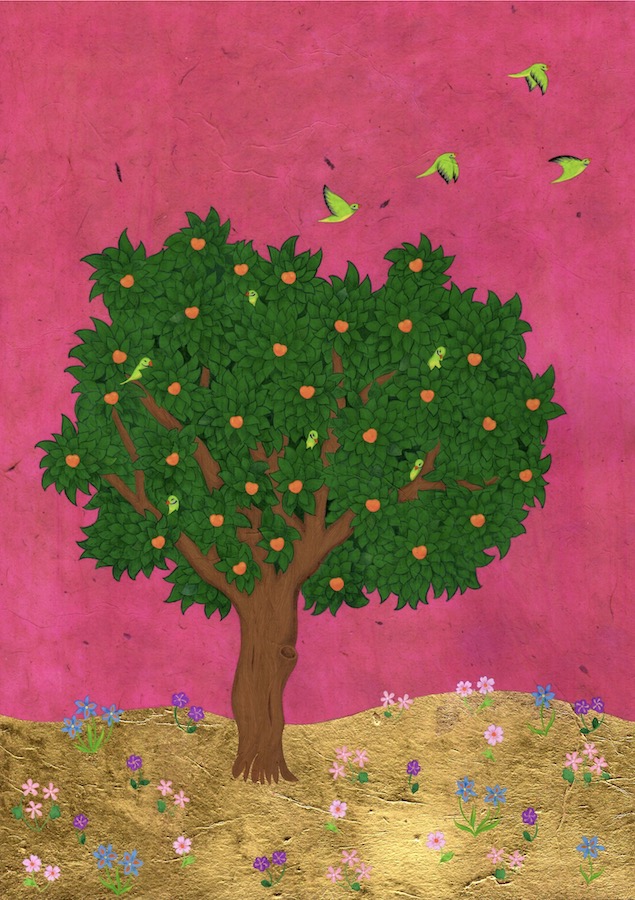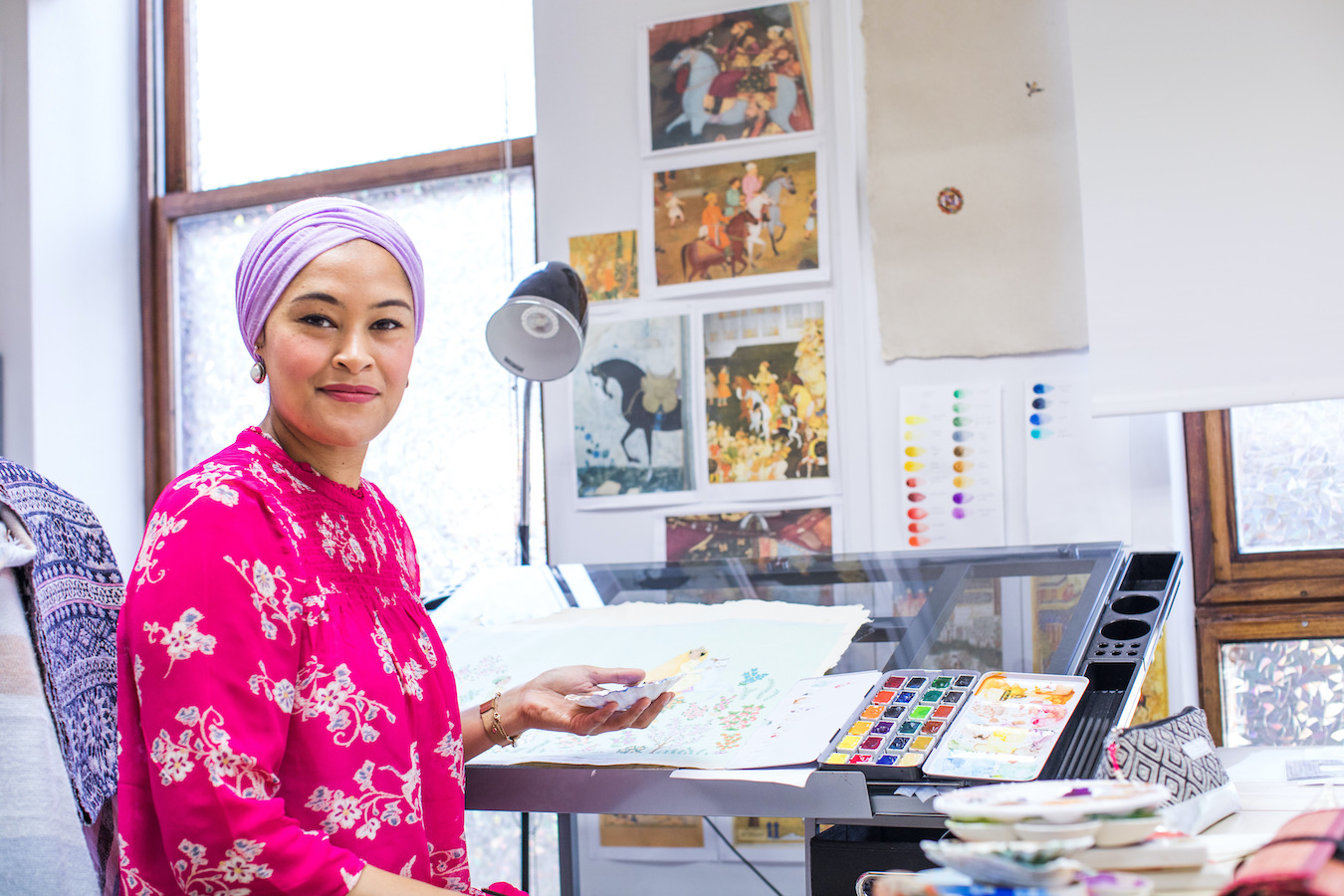LONDON: The exquisite work of British artist, illustrator and art educator Ayesha Gamiet opens a contemporary window to the ancient art of Islamic manuscript illumination.
“I always loved painting and drawing,” Gamiet told Arab News. “My dad studied fine art and always encouraged me. My work ethic comes from my mum. My parents are from South Africa — they emigrated to the UK due to apartheid. My mum had a very typical immigrant mentality of working really hard. She set up her own business. Something of that came through to me.”
Gamiet studied and earned her ijaza (‘authorization’) under master illuminator Ayten Tiryaki in Istanbul. Gamiet holds a masters degree in Traditional and Islamic Arts from the Prince’s Foundation School of Traditional Arts, where she now teaches.
“Traditionally, the master craftsmen were spiritual masters as well and they would train their apprentices both in the craft and the development of their spiritual path and character,” Gamiet told Arab News. “We no longer have those guild systems in place, but there is still something of the essence of that mentoring relationship today. It’s fundamental to the practice of illumination and calligraphy. When I met Ayten Tiryaki, I was struck by how she wasn’t just looking at my artistic skill but at me as a human being. She was concerned for my welfare in a maternal way. The care she showed me and her etiquette — ‘adab’ in Arabic — were wonderful.”
Gamiet’s own teaching has taken her to several other countries, including Saudi Arabia, China and Egypt. “I teach in Jeddah and love teaching Saudi students because they are so hungry for knowledge,” she said.
Gamiet describes her style as “quite free-spirited” but says she is also “methodical.”
“I like to have a structure and plan,” she said. “In the future I would love to start writing and illustrating my own children’s books.”
Here, the artist tells us the stories behind some of her favorite works.
‘Ijaza 1’

The large circular panel in this close-up shows a detail of my hilye — a description of the moral and physical attributes of Prophet Muhammad (peace be upon him). It is a great blessing for an illuminator to paint a hilye, and it is traditional for illuminators to make one when they are ready to graduate from apprentice to full-fledged artist. The hilye expresses our love of the Prophet Muhammad, and our devotion to the craft. It should showcase all your skills. Each individual unit of pattern should be balanced in color and design, and also harmonize with the composition as a whole.
It took 12 years to get my ijaza — it took so long because I did not go to live in Turkey. There was a lot of effort at the beginning — a lot of mistakes and struggle. The key thing is the brushwork. Once you have got that it unlocks a lot for you. After two years of practicing illumination the brushwork began to flow a lot more easily.

I remember my first meeting with Ayten Tiryaki. She gave me some motifs to trace over and copy — traditional illumination and floral motifs — and I was so nervous that I kept cracking the fine nib on the pen. All she said was “Mashallah.” It was her way of making me feel comfortable because my work wasn’t very good but she didn’t want to embarrass me. Being around her throughout the years I saw that sensitivity countless times. It really inspired me because I came to the realization that this craft is not just about preserving a beautiful aspect of Islamic culture and the art of Islamic books – it is also about nurturing beautiful human beings.
‘One Song’

This is a really heartfelt painting. It is about the underlying unity of creation and how the differences between us are superficial as on the level of the spirit we are all united. It is inspired by a poem by Rumi that mentions bird song — all the birds singing together — and sunlight. I thought it was such beautiful imagery.
I gilded the painting — all gold leaf in the background to represent sunlight — and I created an imaginary fantastical forest for the birds to inhabit. The birds are all different but are united through their song.
‘Birds’

In 2018, I was commissioned by the Royal Library, Windsor Castle, to produce illuminated frontispieces for four volumes of poetry written by Imtiaz Dharker in response to an exhibition of Mughal art. This piece was gifted to the Queen. The poems and my frontispieces were handbound into four volumes by the bookbinders at Windsor Castle. It was really great to meet them and collaborate with them on the project. That was one of the highlights of the whole commission — going into the binding room. They left the commission very open to me and I created designs that reflected the Mughal art.
‘Persimmon Tree and Parakeets’

Last year, I was invited by the German children’s author Cornelia Funke, to a residency on her avocado farm in Malibu. She writes children’s fantasy books and is very successful and also extremely generous. She has built four tiny houses around her farm for artist residencies. There was a persimmon tree with parakeets directly outside my house that was the inspiration for the painting. I felt as though I was in a fairy tale. It was magical. It was such a fertile environment for creativity and ideas. I think maybe that’s why I painted the ground in gold leaf.
‘They Fluttered Like Two Butterflies’

I went on a short course on children’s illustration and I had this idea for a story about a child who journeys through the world of Islamic art. So I created this illustration of a child with her friend the Hoopoe. I wanted to bring my knowledge of illumination and miniature painting into the books. This was an experiment with that — so although it’s a children’s illustration, the patterns are quite fine. You can see gold leaf and there are hints of Islamic illustration and miniature as well.
‘The Dancing Princess’

This was for my portfolio when I started approaching publishers about 10 years ago. When I attended my course on children’s illustration we had to illustrate a fairy tale. I chose “The Princess and The Pea” but I made all my characters African and Asian and set it in an imaginary place that has hints of the Alhambra and Morocco. This is the princess who goes dancing in the forest and gets caught in the rain and takes shelter in the prince’s castle.

